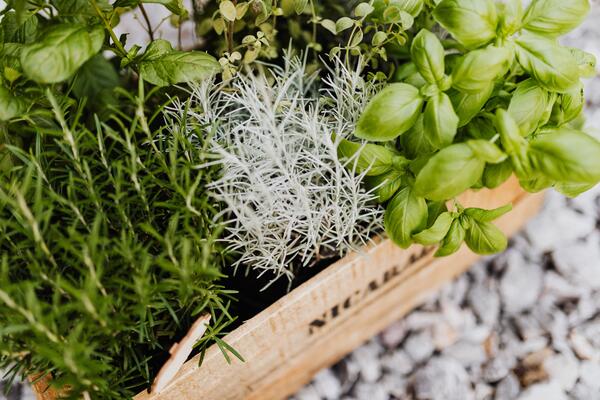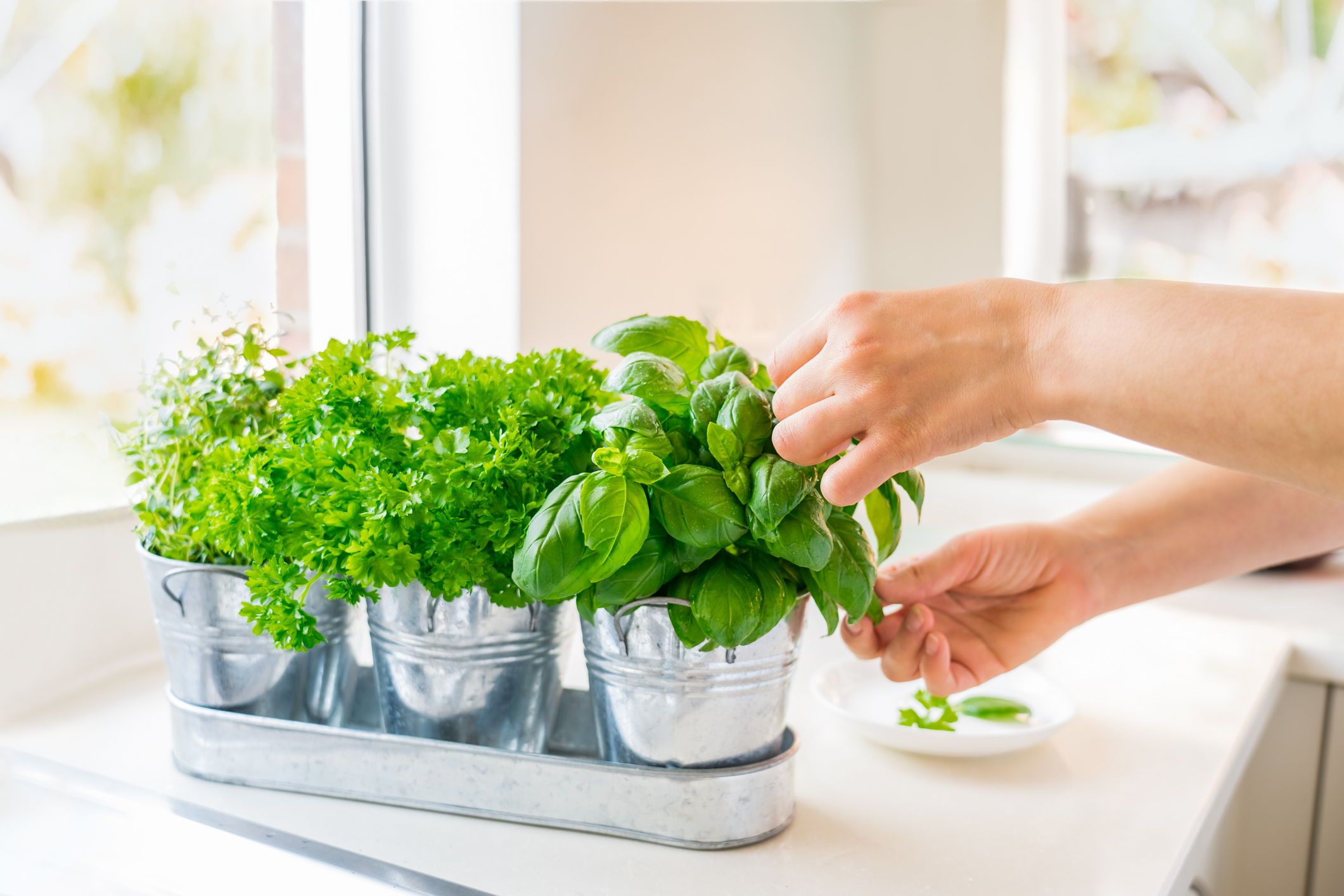Just because days are shorter and colder and the outdoor gardening days are over, that doesn’t mean growing must come to an end. Indoor green houseplants are an option, so add some herbs to the mix this fall and winter.
Whether growing indoors or outdoors, plants still have the same needs. When growing indoors during the winter, the two primary restricting factors affecting growth are light levels and humidity.
Light exposure

Herbs usually need between six to eight hours of bright light each day. Southern exposure windows are great. If windows don’t receive that much light during the winter months, growers can use supplemental lighting. However, supplemental light is not equivalent to natural light, which is why the lights need to run for longer. Plants need around two hours of supplemental lighting for every one hour of natural light. This means most supplemental lighting must be on for 12 to 16 hours per day. An automatic timer can help ensure the lights get switched on and off each day.
If the location is lucky enough to have a window with lots of natural light, make sure to rotate containers every few days. Plants will lean toward the light, which is called phototropism. To encourage even growth, turning the containers is helpful and recommended.
Containers
Make sure all the containers used to grow herbs have drainage holes and utilize a good-quality potting mix. Don’t use garden soil in the containers. Plan on using a water-soluble fertilizer every two weeks for herbs, but don’t fertilize more often. Fertilizing too often may negatively affect the flavor and aroma of the growing herbs.
Temperatures
Room temperatures are best 70 F and below, so avoid placing potted herbs near a direct heat source. However, winter heating causes homes to be fairly dry. To increase humidity, cluster plants together. Another option is to place a humidifier near the plants or grow them in an enclosure.
What type of herbs can grow indoors?
Basil, chives, oregano, thyme, winter savory, rosemary, parsley, sage, and mint all do well indoors. Harvest herbs as needed in cooking. If using fresh herbs instead of dried herbs in a recipe, the conversion rate is 1 tablespoon of fresh herbs for every 1 teaspoon of dried.
Even providing ideal conditions indoors, herbs will likely grow more slowly than they do outdoors in the summer. If using herbs frequently with home cooking, consider preserving and drying herbs in the summer for use in the winter. Or grow more herbs indoors during the colder months. There is nothing wrong with having more indoor plants.
For more research-based information on growing herbs indoors, connect with a local Illinois Extension county office at go.illinois.edu/ExtensionOffice.
Christopher Enroth is an Illinois Extension horticulture educator for Henderson, Knox, McDonough, and Warren counties. Gardeners Corner is a quarterly newsletter from gardening experts around the state. Each issue highlights best practices that will make houseplants, landscapes, or gardens shine in any season. Join the Gardener’s Corner email list at go.illinois.edu/GCsubscribe for direct access to timely tips.



